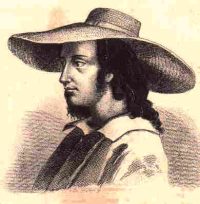On 14 April I disembarked in Manila Bay even before the Descubierta, to which I had been assigned, had anchored. That same day I made the necessary preparations in the capital and on the following day I set out in a panga for Bulacan, Malolos and Arayat, to continue my journey more quickly, as far as possible, by way of the estuaries or the small river tributaries. On this part of the journey we made a collection of the species of trees and bushes which are common in the tidal zone of the estuaries along the coast of this island. We were now well into the dry season and therefore the approach of the rainy season only allowed me time to attend to the plant kingdom, of which the extraordinary abundance of species produced by nature in the various terrains studied would provide a lifetime’s work for the most diligent and practised of botanists.
I stopped in Arayat for a few days to visit the solitary mountain5 which can be seen at a great distance from both north and south, making a considerable collection in its vicinity. This beginning led me to hope that my subsequent acquisitions would be equally successful. By chance I met the Reverend Father Provincial of Santo Domingo, returning from a long visit who, upon learning of the object of our expedition, was kind enough to recommend us to his subordinates by means of a circular which he wrote with the greatest zeal.
I continued to botanize my way across this sandy plain, which is covered with dense forests of many species of trees and majestic palms, and extends in a north/south direction as far as the large bay1 where the province of Pangasinan ends between Cape Bolinao and the coast of Ilocos.
The unsafe route from Arayat to the town of Tarlac is constantly infested with Igorots and Negritos from [the province of] Zambales, causing me to hurry through this part of the [province of] Pampanga and to take various precautions. It is well known that travellers are at great risk of their lives in these parts, if we are to credit the pitiful tales of local people and the considerable number of recent misadventures.
At a first glance it is clear that these towns are administered by native priests, as there is nothing seen to equal the good order, regularity and discipline which characterise those in the charge of the friars, which have rightly won them the veneration of the inhabitants and universal respect.
I made several excursions from the town of San Jacinto to the nearby mountains, going as far as safety would allow me, and avoiding as much as possible any proximity to the Igorots, a fierce, wild people who inhabit the range of high mountains which run northward from Pangasinan, close to the sea, leaving to the east an extensive area of flat, fertile land which is bounded on that side by the equally high and mountainous territory of Cagayan. This delightful plain, which nature seems to protect with so many obstacles, abounds with gold mines and other riches that they own, and which they defend well. However, they often bring their goods down to neighbouring villages for exchange, although always taking the greatest precautions.
I cannot speak highly enough of the generous hospitality extended to me by Father Fray , whose vast erudition and love of science make him a true philosopher in this remote region. His goodness extended even to accompanying me on my tiring excursions, which proved richly rewarding.
